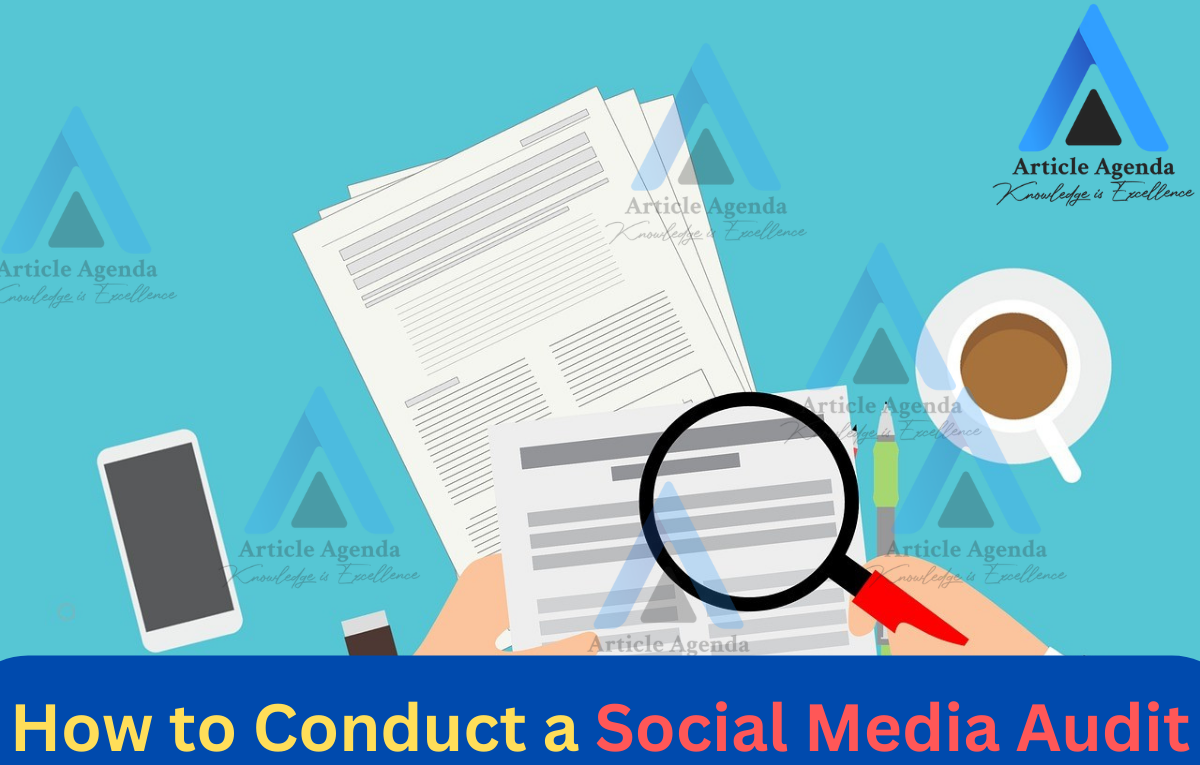What is a social media audit?
A social media audit comprehensively evaluates your social media presence and performance. It involves analyzing your social media profiles, content, and metrics to assess their effectiveness in achieving your business goals. By conducting a social media audit, you can gain valuable insights into your online presence, identify areas for improvement, and make informed decisions to optimize your social media strategy.
Table of Contents
Why is a social media audit important?
A social media audit is essential for several reasons. Firstly, it helps you understand how well your social media efforts align with your business objectives. By evaluating the performance of your social media profiles and content, you can determine whether they effectively engage your target audience and drive desired outcomes, such as increased brand awareness, customer engagement, and lead generation.
Secondly, a social media audit enables you to identify any gaps or inconsistencies in your social media presence. It helps you ensure that your profiles are up-to-date, visually appealing, and reflect your brand identity consistently across different platforms. This is crucial for building brand credibility and trust among your audience.
Furthermore, a social media audit gives you insights into the preferences and behaviours of your target audience. By analyzing your social media metrics, such as reach, engagement, and conversion rates, you can understand which types of content resonate the most with your audience. This knowledge can help you refine your content strategy and create more engaging and relevant posts, leading to higher audience engagement and better business results.
Read More: Is a social media marketing agency a good business?
Steps to conduct a social media audit
Assessing your social media profiles
The first step in conducting a social media audit is to assess your social media profiles. Start by reviewing your profiles on different platforms like Facebook, Twitter, Instagram, LinkedIn, and YouTube. Ensure that your profiles are complete, accurate, and up-to-date. Check if your profile and cover photos are visually appealing and aligned with your brand identity.
Evaluate the consistency of your usernames, handles, and URLs across different platforms. Consistent branding and easy-to-remember usernames help your audience easily recognize and find your profiles. Also, review your profile descriptions, ensure they accurately convey your brand message and include relevant keywords for search optimization.
Read More: The Key to Success with Facebook Ads: Audience Temperature
Evaluating your social media content
Once you have assessed your profiles, the next step is to evaluate your social media content. Review your past posts and assess their quality, relevance, and engagement levels. Identify the types of content that have performed well and resonated with your audience. This could include blog articles, videos, infographics, or user-generated content.
Analyze the consistency of your content across different platforms. Are you maintaining a consistent tone of voice, messaging, and visual style? Consistency is critical to building a solid brand identity and establishing brand recognition. Ensure your content is aligned with your target audience’s interests, preferences, and needs.
Additionally, pay attention to your posting frequency and timing. Are you posting regularly and at optimal times when your audience is most active? Consistent and timely content delivery helps maintain audience engagement and reach.
Read More: Unlocking the Secrets: How to Generate Traffic for SEO Success
Analyzing your social media metrics
The third step in conducting a social media audit is analyzing your metrics. Use analytics tools provided by each platform or third-party tools to gather data on key metrics such as reach, engagement, click-through rates, and conversions. These metrics provide valuable insights into the effectiveness of your social media efforts.
Analyze the trends and patterns in your metrics over a specific period, such as the past month or quarter. Identify the posts or campaigns that have generated the highest reach, engagement, and conversions. Understand the demographics and interests of your audience by analyzing the data on their age, gender, location, and preferences.
Compare your metrics across different platforms to identify the strengths and weaknesses of each. This will help you prioritize your efforts and allocate resources where they will have the most impact.
Read More: 5 Common Google Ads Login Problems and How to Fix Them
Identifying areas for improvement
Based on the insights gained from assessing your profiles, evaluating your content, and analyzing your metrics, you can now identify areas for improvement. Look for gaps or inconsistencies in your social media presence and content that may hinder your success. Consider the following questions:
- Are there any platforms where your target audience is absent, and should you invest resources in those platforms?
- Is your content resonating with your audience, or must you refine your messaging and visuals?
- Are there any missed opportunities for engagement or lead generation?
- Are there any areas where you can optimize your social media strategy to improve results?
Identifying areas for improvement is crucial for enhancing your social media presence and achieving your business goals.
Read More: How to Get Cheap Clicks with Facebook Ads
Implementing changes based on audit findings
Once you have identified areas for improvement, it’s time to implement changes based on your audit findings. Create an action plan with specific goals, strategies, and tactics to address the identified gaps and optimize your social media strategy. Some possible actions may include:
- Updating your profile descriptions and visuals to align with your brand identity
- Refining your content strategy to focus on the types of content that resonate the most with your audience
- Adjusting your posting frequency and timing to maximize audience engagement
- Experimenting with new platforms or features to reach a wider audience
- Incorporating feedback and suggestions from your audience to improve your social media presence
Regularly monitor the impact of your changes and make adjustments as necessary. A social media audit is not a one-time activity but an ongoing process to continuously improve your social media strategy.
Read More: What are Google Merchant listings?
Tools for conducting a social media audit
A social media audit can be made more accessible with the help of various available tools. Here are some popular tools that can assist you in different aspects of the audit process:
- Social media management platforms like Hootsuite and Sprout Social provide comprehensive analytics and scheduling features.
- Google Analytics can help you track website traffic and conversions driven by your social media channels.
- Facebook Insights and Twitter Analytics offer detailed data on audience demographics, engagement, and reach.
- Tools like SEMrush and Buzzsumo provide insights into your competitors’ social media strategies and content performance.
Experiment with different tools to find the best suits your needs and budget.
Read More: Facebook Ad Campaign Objectives Explained: What You Need to Know
Conclusion
A social media audit is essential for optimizing your strategy and achieving your business goals. By assessing your social media profiles, evaluating your content, analyzing your metrics, and identifying areas for improvement, you can make informed decisions to enhance your online presence and engage your target audience effectively. Remember, a social media audit is an ongoing process, and regular evaluation and adjustment are necessary to stay ahead in the ever-evolving world of social media. So, start auditing and take your social media presence to the next level!
Latest Post:
-
Smart Home Appliances in the UAE: Revolutionizing Modern Living
The UAE has long been recognized as a hub for innovation and technological advancement, and the adoption of smart home appliances is no exception. As the nation embraces the concept of smart homes, residents are experiencing a transformation in their daily lives, characterized by increased convenience, efficiency, and sustainability. This article explores how smart home…
-
(Artificial Intelligence) AI and ML (Machine Learning) : Transforming the Future
Artificial Intelligence (AI) and Machine Learning (ML) are two of the most transformative technologies of our time. They are reshaping industries, driving innovation, and opening up new possibilities in ways previously unimaginable. This article explores the fundamentals of AI and ML, their applications, and their profound impact on various sectors. Understanding Artificial Intelligence (AI) What…
-
Digital Marketing Services: Transforming Your Business in the Digital Age
In today’s digital-first world, businesses must leverage digital marketing services to remain competitive, attract customers, and drive growth. Digital marketing encompasses a broad range of tactics and strategies aimed at promoting products or services through digital channels. This article delves into the various types of digital marketing services available, their benefits, and how businesses can…





nice article
amazing